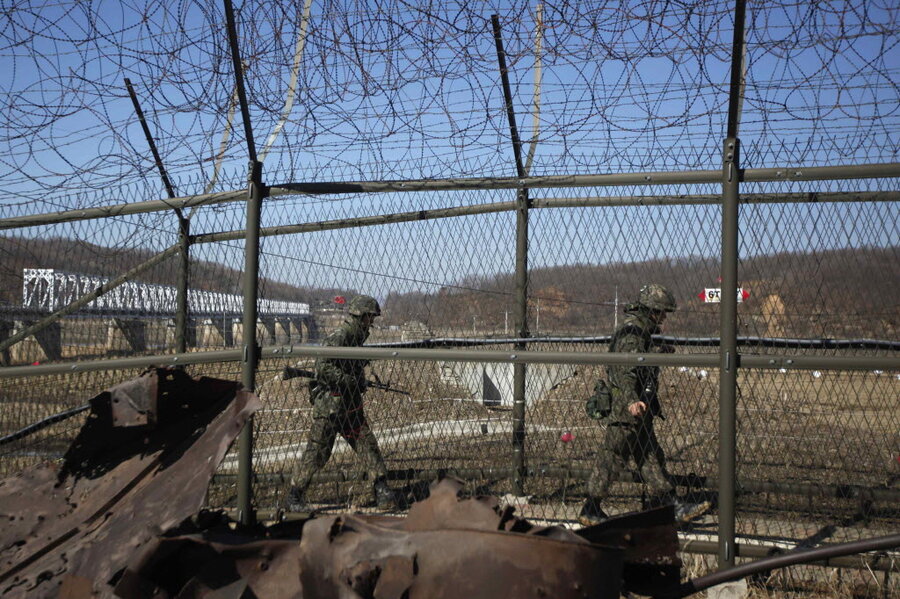The two Koreas eye a test zone for peace
Loading...
One reason for a decline of armed conflicts in recent decades has been the use of an important tool in peacemaking: buffer zones between militaries. They cool off hot spots. They replace fear with patience in working on a negotiated settlement. Most of the time, they maintain a temporary peace.
Turkey and Russia just agreed to a zone in Syria’s Idlib province. Under a new peace pact, once-warring Ethiopia and Eritrea are dismantling a zone set up in 2000. And over the past four years, a buffer zone in Ukraine has prevented war between Russia and NATO.
Of all the buffer zones in the world, the most famous may be the one that has divided the two Koreas since a “temporary” truce ended a 1950-53 war. The 160-mile-long demilitarized zone (DMZ) has been a constant scene of tension and occasional violence, filled with land mines and heavily armed guard posts. On either side of the 2-1/2-mile-wide zone is one of the world’s most heavily militarized frontiers, sustained by fears of invasion and threats of nuclear escalation.
Now, as the result of a Sept. 19 agreement between North and South Korea, the DMZ could be the starting point for finally achieving denuclearization of the peninsula.
The two sides agreed to dismantle several guard posts, start removing land mines and other weapons, halt military drills close to the zone, and take other steps by the end of 2018. The proposed moves could help reduce the risk of miscalculation and surprise attack. They reflect a shift from managing war toward managing peace, from strife toward respite.
The ultimate goal is to create confidence-building measures that will ensure enough cross-border trust for difficult negotiations on nuclear weapons.
Suspicions of North Korea remain high after its scuttling of previous agreements about ending its nuclear program. Yet if its current leader, Kim Jong-un, is sincere about opening his closed nation for economic development, he has been given an opportunity by South Korean President Moon Jae-in to prove it. Good buffer zones can make for good neighbors.







